Selaginella (layunok): types and care at home
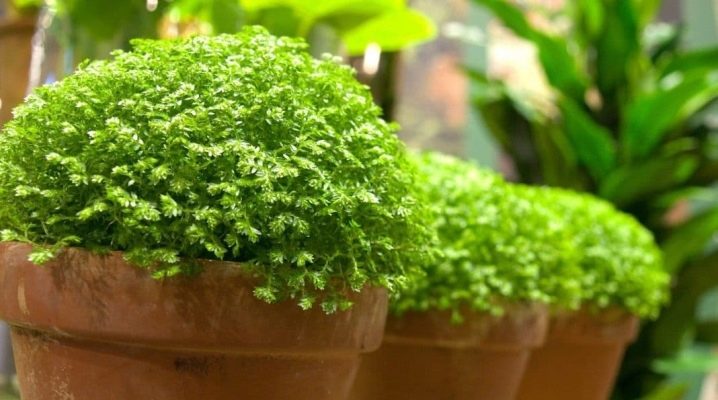
Among exotic cultures, the most popular are those that produce incredibly beautiful flowers. But to be limited to them for modern gardeners is not at all necessary. Selaginella can be a very attractive species.
Description
A plant such as selaginella is the only genus in the Plaunce family of the Lycopate division. Plaunok in nature inhabits almost all the tropics and subtropics on both sides of the equator. The species is recognized as a relict, since it has existed for at least 70 million years (or even more). Selaginella looks like a fern, although many people tend to associate it with moss. It is not for nothing that the famous Karl Linnaeus included her in this group.

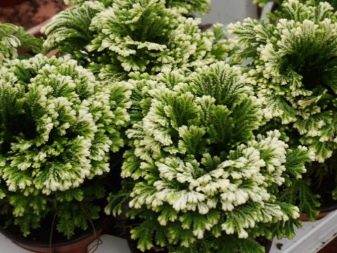
Some selaginella is more likely an epiphyte, inhabiting the trunks or branches of large trees. Also among the representatives of the genus there are lithophytes, settling on outcrops of rocks. But the bulk of the species is concentrated on rocks located near a river or waterfall.
Selaginella can represent plants of various sizes. There are also very miniature specimens - 0.1 m maximum with a stem diameter of 0.001 m.
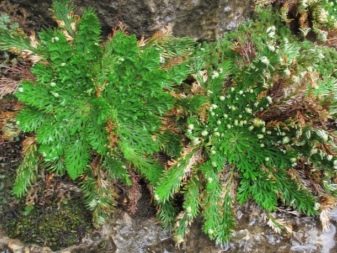
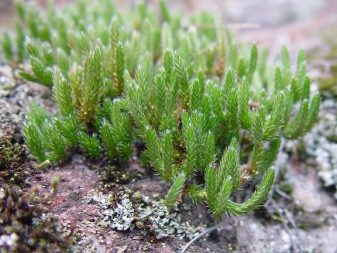
Shoots at selaginella creeping or slightly raised above the ground. From them, the development of a mass of root shoots begins. Some of the plunks grow best on damp shady ground - such plants produce thin brownish twigs. Their foliage is green, but a black or blue steel sheen is clearly traced on it.
Those selaginella that settle on dry, well-lit land are distinguished by the coarseness of the shoots. The stem of such species is distinguished by a mixed brown-red tint. In this case, gray-green leaf plates are formed.
Each sheet does not exceed 0.005 m in length, they are arranged in two rows, like overlapping tiles.
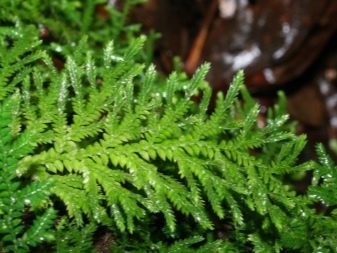

A sporophyte (in other words, a multi-spore plant) produces shoots with heads similar to ears. In botany, they are called strobiles. Strictly speaking, in biological terms, strobila are not an independent organ, but a modification of the shoot itself. On the strobilae, leaf plates with sporophilloids develop inside. Plaunculus can also reproduce in a vegetative way.
The plant is grown only indoors. Optimal conditions can be created with aquariums, miniature greenhouses, florariums or tightly sealed flower showcases. A Garden in a Bottle is fine too. The growth rate is the same throughout the year, but despite all this, the stem can only be grown by experienced growers.
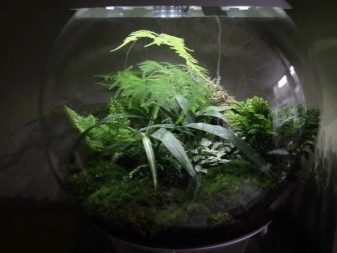
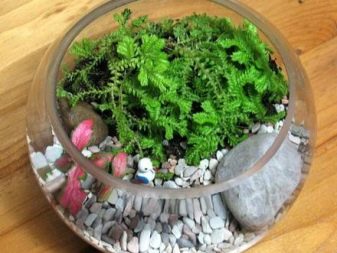
In nature, the plant inhabits almost all known territories. The only exceptions are the coldest regions of the world. In Russia, wild plunks have a small growth. They can be found mainly in damp, densely shaded places.
But sometimes these plants still "come out" in our country, and even cover the rocks.
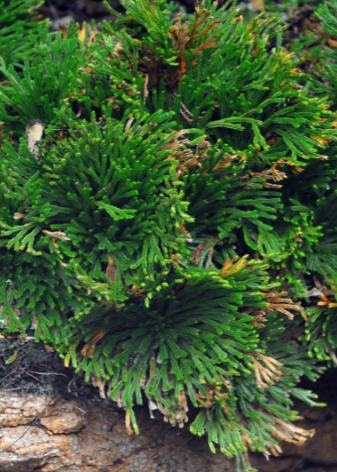
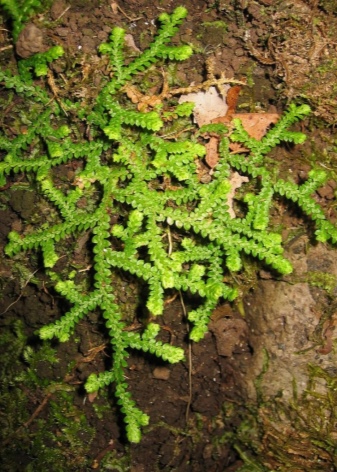
Varieties
The common selaginella gained great popularity. It is characterized by erect, intensively branching shoots. The height of each shoot does not exceed 0.3 m. In appearance, these parts of the plant resemble frond ferns. The grown branches droop slightly. The foliage is painted in bright green tones, and sporangia of a golden color are formed on it.
Martens "Jory" ("Yori") is somewhat different. Her dimensions are not so large, and the outer colors are more delicate. Modest bushes look no less beautiful in local conditions than in the tropics of South America. Pegless selaginella is also popular - after all, it is very decorative.
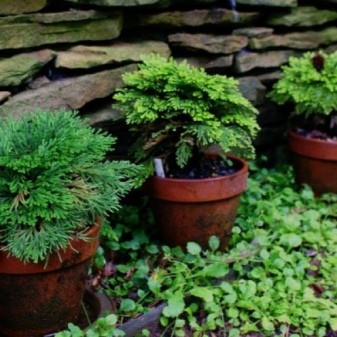
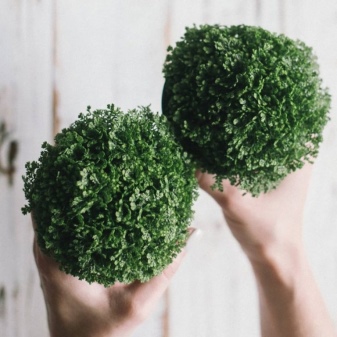
The creeping stems of the plant are not too long. They are notable for their irregular shape and are covered with miniature carved foliage. A potted culture forms dense caps or a monolithic green carpet.
Short leaves of bright green color are characteristic of scaly selaginella (lepidophyllus). Its branched stems do not exceed 0.1 m in length.
Scale-leaved plants are unique in that they inhabit desert areas. When dry time comes, selaginella curls up into a kind of ball. But the first bush flooded with rain unfolds in its usual shape and comes to life. Because of this, the epithets "resurrection plant" and "Jericho rose" even appeared. This is the Swiss variety.
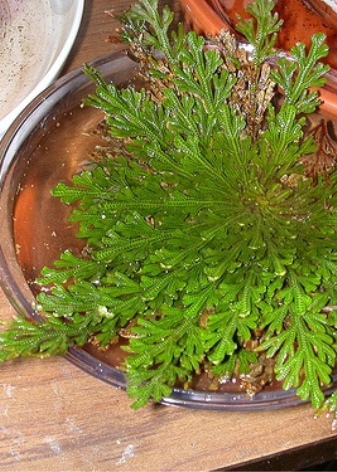
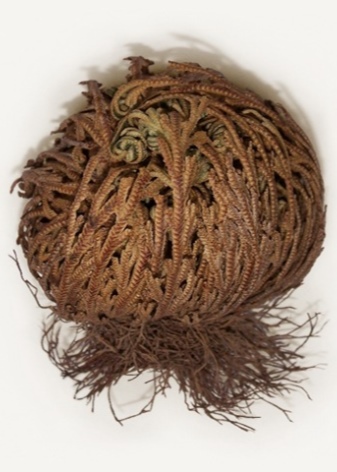
A perennial culture is formed from loose shoots creeping along the ground. On these shoots, rather large leaves are formed, having a glossy surface of light green color. The Wildenov's ball can also be an attractive solution. The plant forms branched shoots that can grow straight or droop. On the shoots, small green-gray leaves with a blue coating are formed.
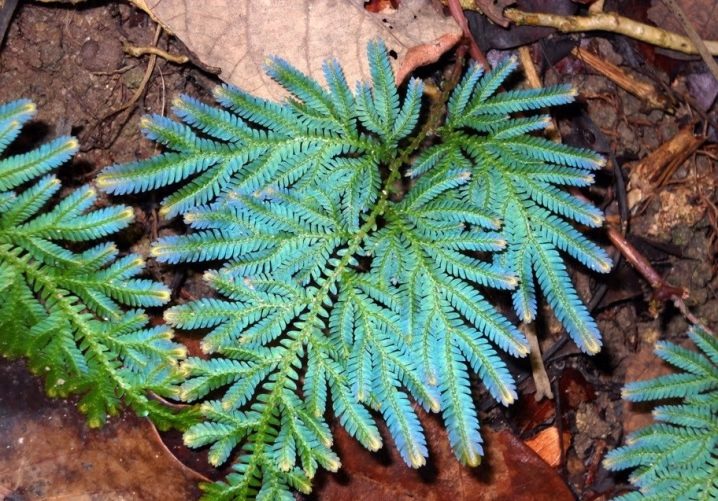
Selaginella Kraussa is divided into 2 types. In one, the leaves are colored green-yellow, and in the other, white with variegated inclusions. The height is very low. The leaves are roughly the same size as the fern.
Selaginella apoda is the same as the legless culture.
One of the most interesting is the tamarisk species, which is listed in the Red Book. It forms a high density turf. The stems have small branches and are distinguished by external oblateness. Numerous foliage gathers in dense rosettes.
A characteristic feature of tamarisk spikes are small tetrahedral spikelets.
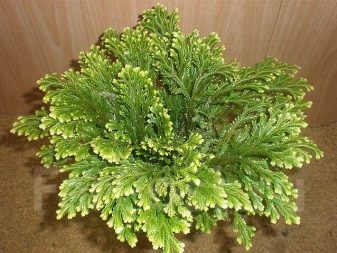
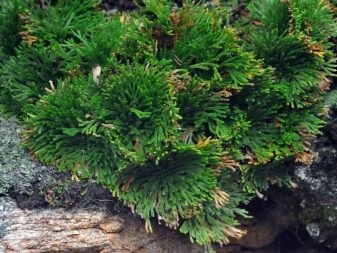
Conditions of detention
Temperature and humidity
Selaginella comes from hot countries. Therefore, the growing conditions directly affect the length of the emerging shoots. The approach to selaginella in indoor floriculture is the same as for other ground cover crops. But some large varieties are used as ampelous varieties. Like any other spore plant, selaginella can master a warm, damp area in a short time.
The appearance of the plant is deceiving - it may seem that it is unpretentious. However, selaginella should not be put in a draft.
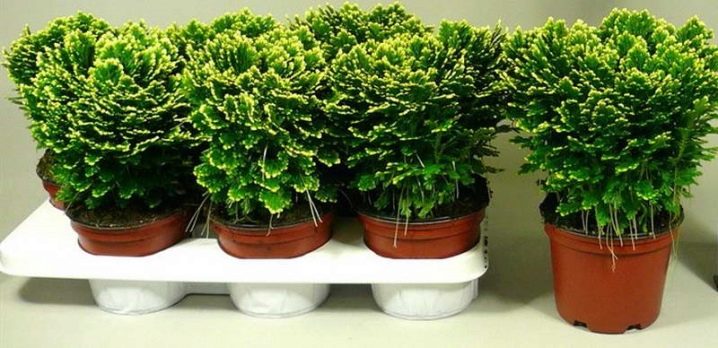
Even if the temperature drops to only 18 degrees, growth is significantly inhibited. Only two species - legless and Krauss - can spend the winter at 10-12 degrees. All other plants of this family require, even in the cold season, a temperature strictly from 16 to 18 degrees Celsius.
The earth must be kept moist continuously, even a short drying out is unacceptable... The dryness of the air is also very bad; because of it, the leaves can die off, and even if this does not happen, the appearance will deteriorate. Therefore, watering should be abundant, it is also recommended to spray selaginella more often. For spraying, use warm boiled water of minimum hardness.
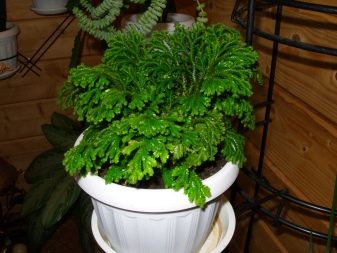
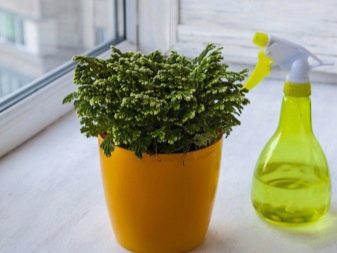
But no amount of watering will help if the temperature drops to 12 or rises to 28 degrees. In such an environment, Selaginella will inevitably perish. At the same time, despite the high requirements for air humidity, excessive moisture of the substrate is not recommended. The best way to irrigate is through the pallet. In the intervals between waterings, only the upper part of the earth should dry out, and in the middle it must constantly maintain moisture.
Experts recommend humidifying the air up to 80% (with a deviation of no more than 1-2%).
Lighting and location
Direct sunlight almost inevitably leads to leaf burns.To make matters worse, exotic culture can dry up altogether. This means that it will have to be kept in a slightly shaded place, where only a diffused stream of light falls. Alternatively, you can put the plant on the north window or grow it under artificial light.
Good lighting is very important regardless of the season. It is not recommended to take out the bushes to the terraces or balconies in summer. When the room is ventilated, it is better to rearrange the container with the ceiling somewhere else. The reason for such preferences is quite understandable: in the wild, selaginella often develops as an epiphyte, covered from the bright sun by more powerful plants.
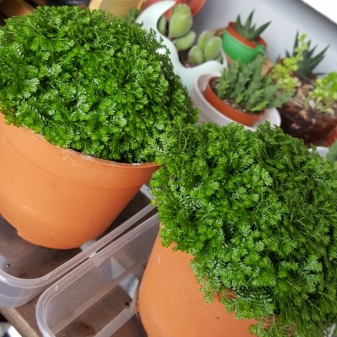
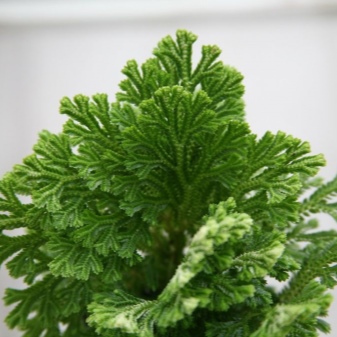
Reproduction
To propagate selaginella, you need to divide the bush or use the cuttings method. Having prepared the cuttings, they are placed on loose, damp ground. The bases of the planting material are sprinkled. Then the workpieces are immediately watered and covered with foil.
It is necessary to grow the planting material in a warm place, but at the same time as far as possible from direct sunlight.
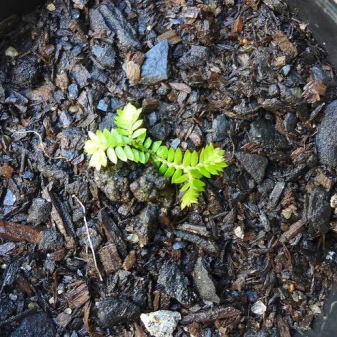

It will be possible to propagate a tropical plant only if the soil is moist continuously. Some growers simply root cut cuttings in water.
Important: some plant species can form roots when they come into contact with the ground.
In this case, the rooted part is simply separated and transplanted into a pot. The rest of the approach is not unusual.
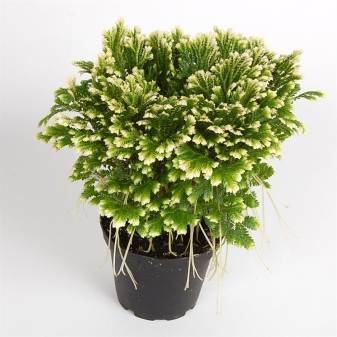

The division of the bush can be done not only into two parts. Even small fragments can be used. All shoots should have, if not too large, but viable roots. Some experts advise replanting the workpieces in peat pots. They will also have to maintain a stable humidity.
For grafting, you cannot take pieces of stems shorter than 0.05 m. They can also be rooted in wet peat. To inhibit evaporation, a polyethylene film is used. In the next 10-14 days, you will have to systematically water and air the plantings. As for reproduction by spores, it is possible only theoretically - in practice, even careful work rarely gives a good result.
How to care?
Watering
For watering selaginella, only soft water that has settled for a long time is suitable. It is required to ensure constant moisture content of the pebbles laid out in the pallet. The surface of the earth must also not be allowed to dry out.
Good care of the exotic also implies periodic spraying from a spray bottle. Some growers use common home air humidifiers by simply placing them near the planted plants.
In winter, watering should be minimized, but you will have to carefully monitor the condition of the earth.
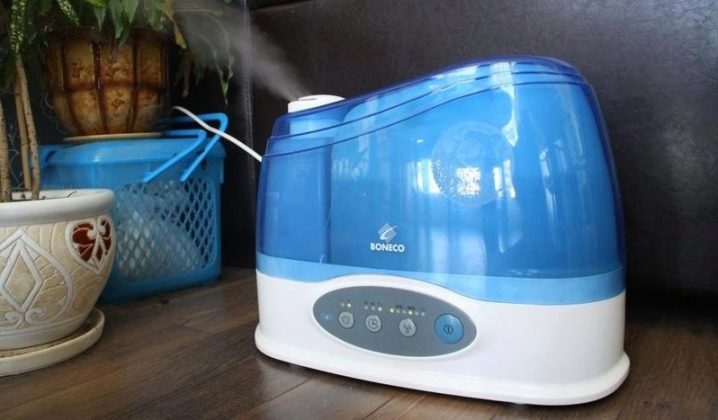
A special approach is required when growing a bottle in a bottle. This method of cultivation requires care and accuracy. However, in such an environment, lymphoids feel equally excellent in a house and in a city apartment.
A fine structure drainage is placed in a dry, clean vessel. Charcoal and lightweight soil are poured over it, which is mixed with peat. The soil will have to be crushed with a cotton swab. It is recommended to fill the soil diagonally so that a mound appears at the farthest wall. The tallest bushes are planted against the same wall.
Creeping selaginella of small stature is exposed in front. As soon as a miniature plantation is planted, it needs to be watered. To do this, use a small watering can, which has a long, narrow spout. This is due to the fact that water must penetrate exactly along the wall without erosion of the soil.... If this does happen, the ground must be leveled with a tampon.
The vessel is sealed. The walls are periodically covered with condensation. You can deal with it by opening the bottle for 1 or 2 hours. Additional irrigation of the garden in glass is not required.
The container should be located in partial shade, protected from drafts and direct sunlight.
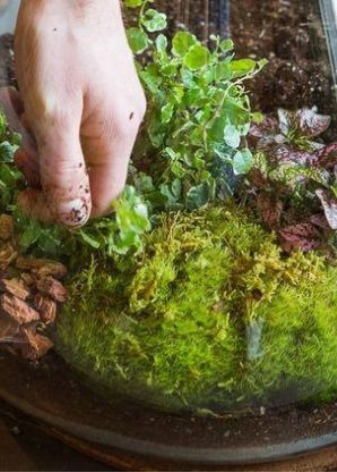

Top dressing
In order for Selaginella to develop well at home, it must be fed twice a month. For this, a complete complex fertilizer is used, which is bred in strict accordance with the instructions. In winter, you do not need to feed the bushes. From early March to mid-autumn, Selaginella should receive 50% of the fertilizer rate calculated for decorative deciduous crops.
Excessive amounts of nutrients can cause serious damage.

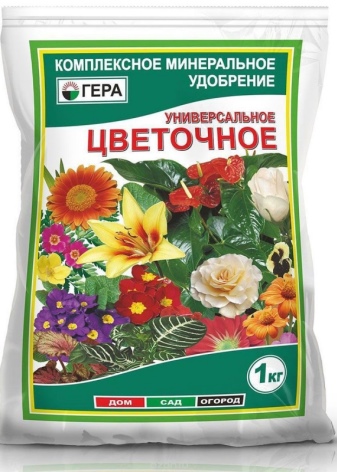
Diseases and pests
Selaginella does not often suffer from the same diseases as other greenhouse inhabitants. It is best to focus on the appearance of the foliage. A juicy and robust looking leaf with a fluffy surface is absolutely healthy. If water stagnates in the ground, it is likely:
- the appearance of mold;
- lowering of the stems;
- the appearance of a pale color in them.
Water deficiency manifests itself in the yellowing of the foliage and its dropping. Having noticed dark spots, growers should immediately know that this is a manifestation of excessively high temperature. Weakening selaginella may indicate a lack of nutrition. Then the plant also grows more slowly than usual. Selaginella reacts to a lack of lighting by pulling foliage, at the same time it loses its splendor.
If all the care requirements are followed, you can hardly be afraid of problems. Selaginella is not attacked by aphids, spider mites or other pests. The plant itself is very resistant to various viruses and fungal organisms. When a part of the bush has suffered from dryness or excessive moisture, problem pieces can be removed without problems. The flowers will quickly become lush and take on real beauty.
Leafy foliage and excessive softness are caused by insufficient air access. Most likely, the land is too flooded.
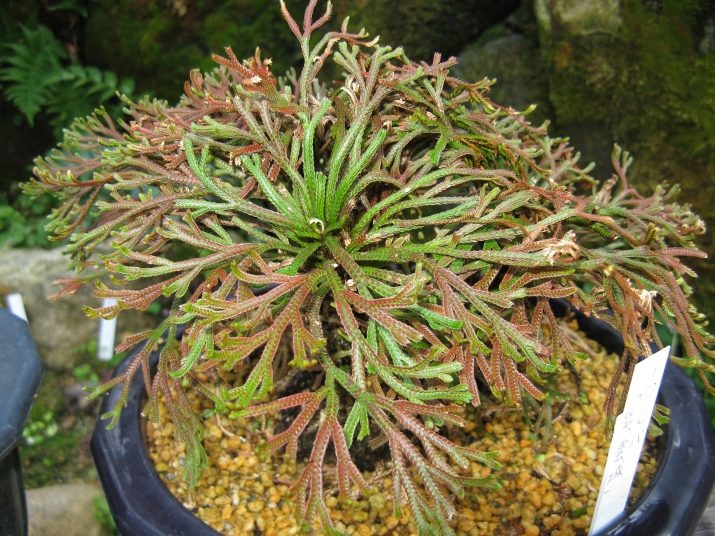
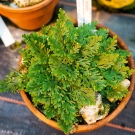
You will have to change the approach to watering or transplant the flower into fresh soil. But a simple transplant doesn't always work. You definitely need:
- examine the whole plant;
- get rid of rotting roots;
- treat an entire part of the root system with fungicide solutions;
- cover the transplanted plant with a plastic bag.
Pulling foliage that becomes unhealthy pale may indicate more than just a lack of light. It is likely that the plant is simply watered with very hard water. If even after changing watering the situation does not change, you need to use "Ferovit" or iron chelate.
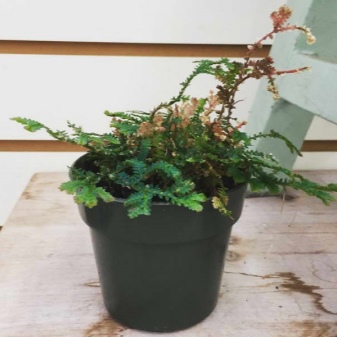
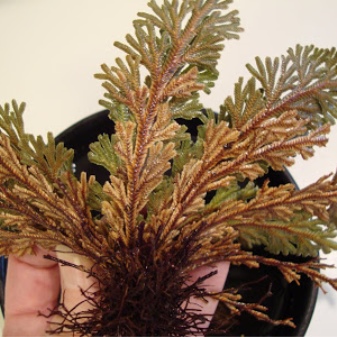
When the color of the leaves changes and they die off, you need to immediately reduce the temperature and increase the humidity. If the foliage curls up into balls, you need to get rid of cold drafts, or, conversely, lower the temperature in the room.
Selaginella affected by pests is treated with alcohol, soapy water or a solution of potassium permanganate. It is necessary to use branded insecticides only with a very strong infection. Root rot control measures are the same as for other crops. But first you will need to get rid of the cause of the disease (waterlogging of the soil). As you can see, it is quite simple to grow Selaginella and protect it from diseases.
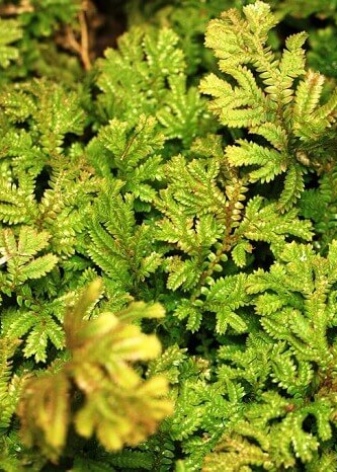
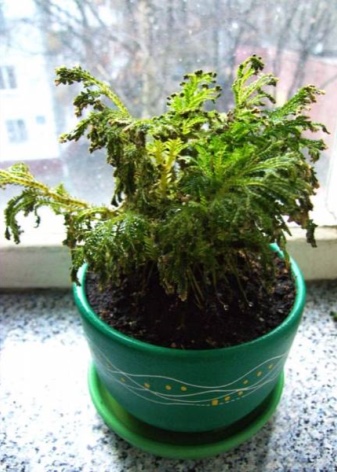
Transfer
The need to transplant the stem arises every 2 years. For this, a light substrate is used, which must be properly loosened. The acidity should be neutral, and experts recommend using a homogeneous mixture for transplanting:
- peat;
- sand;
- sheet soil.
To increase the humidity after transplanting, aquarium containers or wide vases are often used.

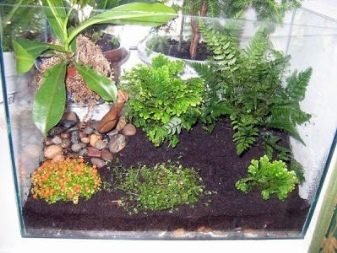
Pebbles and moss should be laid out on the bottom. This layer should be very moisturized. A pot of earth and selaginella is placed inside. Evaporation will help to increase humidity by at least 20%, but you will have to systematically add water to the filler.
Another way to ensure decent humidity after transplanting is to cultivate Selaginella in a florarium or greenhouse. For transplanting selaginella, shallow, large-width containers are suitable.They should be well drained and saturated with loose soil, therefore tamping, compaction is not required. You can safely take ready-made soil mixtures for saintpaulia or begonias.
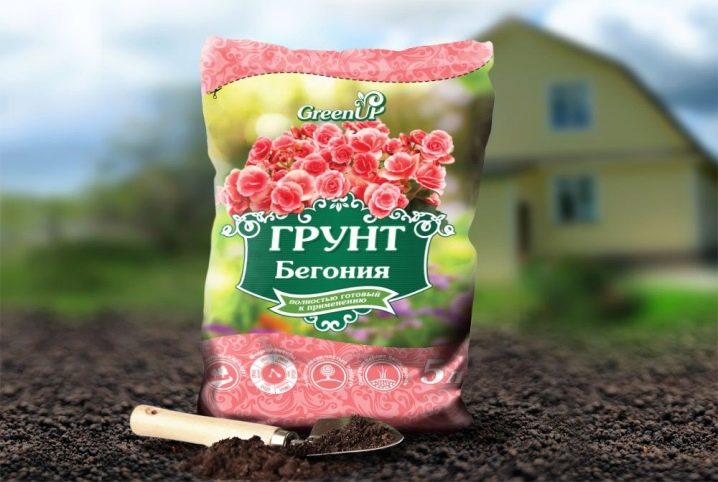
Some prepare the earth with their own hands, taking equal volumes of turf soil, peat soil and adding a little crushed moss to this mixture.
If this option does not suit you, use:
- 2 parts of peat;
- part of the sod land;
- part of the sand.
If the plant has grown too much, it is transplanted into a larger pot using the transfer method. No deepening is required, you just need to put additional soil on all sides. Selaginella transplanted in this way must be watered immediately. Then it is covered with foil for the next few days. Then, as quickly as possible, new roots are formed on the growing shoots.
Selaginella is sometimes transplanted into aquarium tanks. Of course, not with the fish, but dry. Then they talk about the "bottle garden". Excellent for selaginella and growing in a florarium. There it is easy to control the height of the plant and provide decent moisture, and therefore it is possible to maintain extraordinary beauty and grace.
You can learn more about the nuances of caring for selaginella in the following video.























The comment was sent successfully.